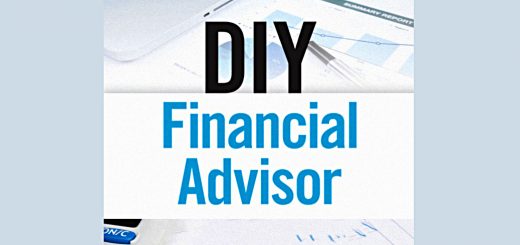The DIY Financial Advisor 4 – Risk Management and Stock Selection

Today’s post is our fourth visit to the book – The DIY Financial Advisor (from the team at Alpha Architect).
DIY Financial Advisor
DIY Financial Advisor is a book from the team at Alpha Architect, an asset manager and a consultancy to family offices.
The thesis of the book is that the DIY Investor can make long-term decisions designed to maximise risk-adjusted performance after fees and taxes.
- In contrast, the fund manager has short-term incentives which conflict with this goal.
The themes of the book are that you can do better than the “experts”, but that you need to avoid psychological traps and stick to an investing framework.
In the first part of the book, AA made a convincing case that a systematic DIY investor – armed with a model – can beat the experts:
- Experts are self interested, susceptible to the same behavioural biases as the rest of us, and rely on stories rather than facts.
Humans are prone to poor decision-making across a broad range of situations.
Systematic decision-making (which uses models) outperforms discretionary decision making (using experts).
The (erroneous) idea that experts can outperform relies on three incorrect assumptions:
- That qualitative information increases forecast accuracy.
- That more information increases forecast accuracy.
- That experience and intuition increase forecast accuracy.
Humans have three key problems:
- Inconsistency
- Overconfidence
- Reliance on stories
Part two explains the tactics that experts use to dissuade you from following an evidence-based systematic process (with low fees).
- Fear
- Greed
- Complexity and
- Relationship-building.
AA’s decision framework is called FACTS:
- Fees
- Access
- Complexity
- Taxes
- Search (costs)
In addition to this decision framework, you need to understand some portfolio management fundamentals:
- Asset allocation
- Risk management
- Security selection
Last time out we looked at asset allocation, and today we’ll look at the other two.
Risk management
AA define risk management as the art of preventing significant drawdowns.
- This should have the side effect of improving risk-adjusted returns, but may not necessarily increase absolute returns.
AA view risk management as part of market timing and divide the various techniques in to five “buckets”:
- Fundamental (macroeconomic) factors
- Technical (price and volume) indicators
- Senetment indicators
- Variance (volatility) indicators
- Hybrid approaches using two or more of the above
AA find that few of the ideas stand up to serious testing.
- There’s a lot of data mining involved in most of them.
The exceptions are a few of the simplest technical rules.
- My own series of articles on market timing (a work-in-progress as I write this) suggests that there are a few macroeconomic measures that can be combined with technical rules to improve your chances of avoiding a serious drawdown.
Technical rules
AA recommend simple moving average rules (MA) and time series momentum (TMOM).
- The two rules perform similarly (across the five asset classes of the Ivy 5 allocation), but combining the two is slightly better than either.
The MA rule they use is the 12-monthly average (ie. the average of the last 12 month-end prices).
- The closest daily MA would be the 250-day MA, though many people (myself included) prefer the 200-day MA.
When the current price is below the MA, you do not buy the asset, and instead stay in cash.
The TMOM rule is simply that returns over the period have been higher than the risk-free asset (usually the Treasury bill, or perhaps the 1o-year gilt here in the UK).
- Under the current low interest regime, this is little different from simply requiring a positive return over the period.
Again, AA use a 12-month lookback period.
In the next section, AA demonstrate that the TMOM rule is effectively a function of a current MA rule and a lagged MA rule.
- Since both rules are simple to implement independently, this has no practical relevance.
In general, the MA and TMOM rules point in the same direction, but:
- If there has been a decline in the first half of the year and an incomplete recovery, then MA will be positive by TMOM negative.
- If there was a rise for most of the year then a recent decline, TMOM will be positive but MA might be negative.
AA call the combination of the two rules ROBUST, and they implement it in a slightly more complicated way:
- 100% allocated if both tests are passed
- 50% allocated if only one test is passed
- 0% allocated if both tests are failed
AA use dynamic risk aversion (another behavioural flaw) to explain why such simple technical rules work.
- Investors’ appetite for risk (and loss in particular) is lower after a market fall.
Which means markets fall further than they would if rational investors were involved.
- They overreact, and avoiding these over-reactions can be profitable.
I believe this also explains why severe crashes are often followed by strong recoveries.
- Which means there are sequencing effects in stock prices that are ignored by Monte Carlo analyses.
Security selection
By security selection, AA mean the use of factors (smart beta) to achieve outperformance from using a subset of stocks.
They claim that only two factors are both statistically reliable and simple to implement for DIY investors:
- These are value and momentum.
Depending on your toolkit (eg. a stock screening service like Stockopedia), I think it would also be practical to use:
- Carry (dividend yield), quality and low volatility.
Equal-weighting of portfolios is also straightforward to implement.
Value
AA describe the traditional value approach used by Ken French of French and Fama fame.
- He uses Price to Book (also known as book to market) to divide (US) stocks into deciles once a year, and compare their performance.
Since the financial crisis, value has underperformed, and there is a lot of discussion at present as to whether the reliance of large tech monopolies on intangibles has made the price to book ratio irrelevant.
- The jury is out at the moment, but even price to book has run its course, their are other value measures available, including the commonly-used PE ratio.
There are two explanations for why value works:
- The additional returns are compensation for the extra riskiness of cheap stocks (which may be more likely to go bust for example).
- Value stocks are cheap relative to over-priced growth stocks, whose prices are bid up because their historic growth rates are extrapolated into the future.
- In other words, investors fail to account for reversion to the mean (through representative bias).
- They may additionally rely on optimistic future forecasts from analysts.
AA recommend a combination of three value measures:
- price to book
- price to earnings
- EBIT / total enterprise value (TEV)
EBIT / TEV is the best single measure.
Momentum
AA refer to a paper from Hurst, Ooi and Pedersen called “Demystifying Managed Futures”.
- This contains a model for the lifecycle of a trend driven by a shift in fundamental value.
In brief, the price is slow to react, but eventually overreacts to the change, before falling back to fair value.
There are several behavioural biases involved:
- Anchoring.
- The disposition effect (holding on to losers, selling winners) which slows the upwards price discovery process.
- Herding as the trend gets underway.
- Confirmation bias and representativeness, which delay the end of eth trend.
To explore momentum, AA use a 2-month vs a 12-month lookback.
- Stock prices revert over the short term, so the most recent month is often discarded.
- Strictly, AA calculate the geometric mean of 11 monthly returns, ignoring the most recent month.
Momentum performs very well, with a much bigger gap between higher momentum and lower momentum stocks than between value and growth stocks.
- AA note that trading costs (and in the US, short-term capital gains taxes) can dull this edge somewhat.
Despite this, most active managers use market cap (large vs small) and value vs growth as the axes of their investment strategies.
- AA suggest that this reflects a confusion that momentum investing is in some way growth investing.
AA note that a portfolio allocated 50% to value and 50% to momentum outperforms both on most measures.
- The value half is rebalanced annually, whilst the momentum half is rebalanced on a monthly basis.
This result holds for international as well as US stocks.
That’s it for today.
- It’s been very meaty today, with good coverage of trend following techniques to avoid drawdowns, and stock selection factors to produce outperformance.
There’s one more article to come in this series (excluding a final summary post).
- That will cover the DIY solution and some “practical advice”.
Until next time.














